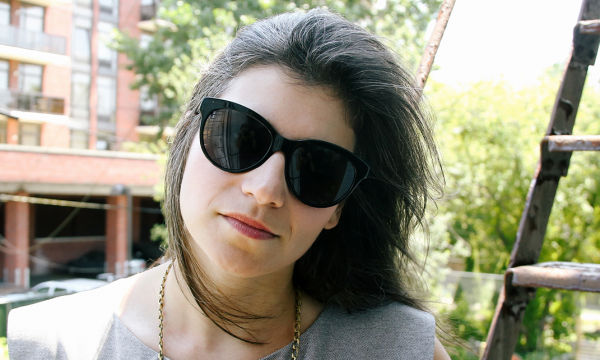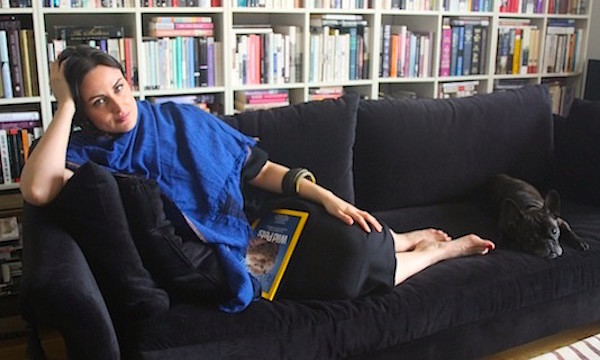Carolyn Murnick on Memoir, Murder, and Vulnerability
September 14, 2017 | Filed in: Woman of the Week
For the past ten years, Carolyn Murnick has been a senior editor at New York Magazine, but before that, in 2001, her best friend from childhood was murdered. Their lives had already taken different turns: At 22, Carolyn was a self-conscious Columbia student, while Ashley was dabbling in sex work in L.A. Still, they had maintained a bond, and when a man was charged with Ashley’s murder (an alleged serial killer, no less), Carolyn wanted more information. Frustrated with how Ashley was being portrayed in the media and the courtroom, Carolyn delved into her old friend’s life, as well as the relationship they shared. The result: Carolyn’s first book, The Hot One, a memoir about following Ashley’s case—which is still unfolding—and the evolution of friendship and loss. We visited Carolyn’s apartment in Brooklyn recently to talk about personal narratives, writers’ egos, and how to shake off judgment.
I REALIZED EARLY ON that it’s not a good idea to imagine who your readers will be and what they might think of you, because it’s too crippling. I had to block it out. My focus was to create a narrative that felt true and authentic, without thinking about how it would make me look. With memoirs, I notice that writers sometimes flatter themselves subtly—for example, you’ll be reading a scene where someone tells the narrator that she’s pretty. That always takes me out of the story because I know it’s the writer’s ego talking. From my own experiences as a reader, I believe that vulnerability is what allows people to connect. Even if you’re talking about something very specific and weird that pertains to your own neuroses, those elements are often what readers will latch onto.
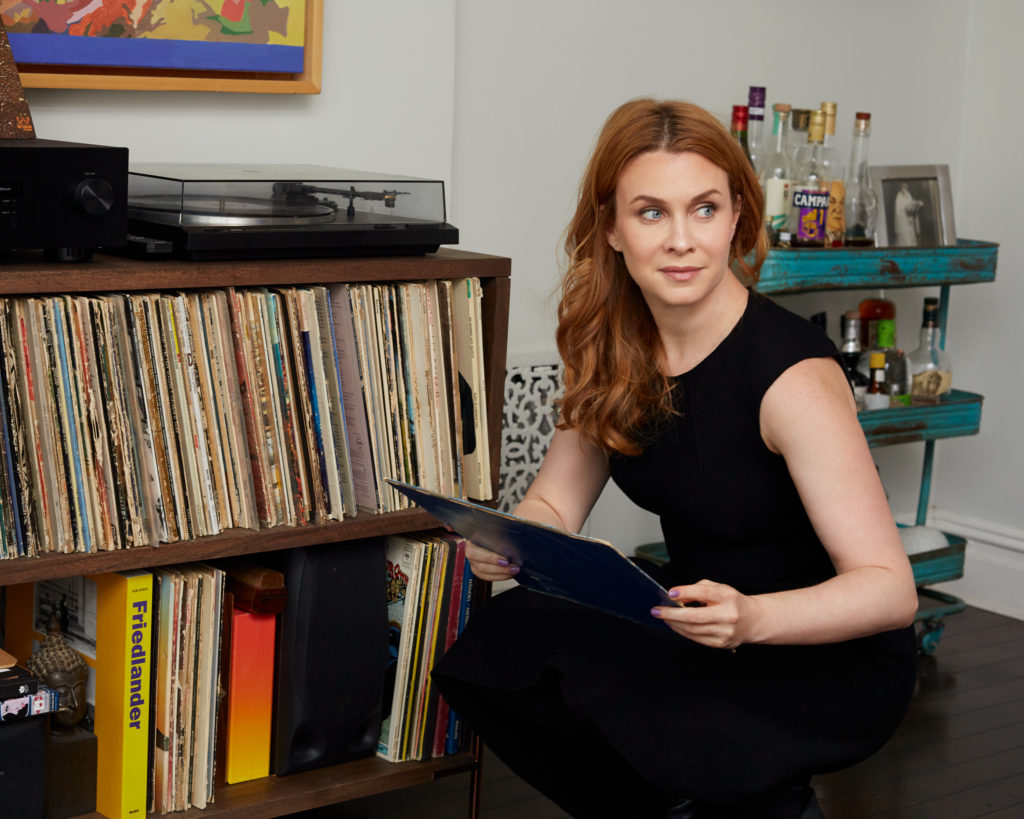
Carolyn wears the Melanie dress in black.
AFTER ASHLEY WAS KILLED in 2001, I thought, “Who knows if I’ll ever write a book, but if I do, I want it to be about this—if I’m ever confident enough to do it.” Then, in 2008, when I learned that someone had been arrested for Ashley’s murder and that there was going to be a trial, it felt like I had to do it, whether I was ready or not. The emotional drive of wanting to pursue answers was what pushed me. Once I started talking to people about her, I began to understand that her story was resonating with them. To have a successful personal story, it has to be about more than you. This book isn’t just about my experience of losing my childhood best friend; hopefully, people can connect to it in a universal sense and relate it to their own lives and relationships.
I CERTAINLY HAVE MOMENTS OF VULNERABILITY, but it’s not because I’m thinking, “Oh my God, is it embarrassing that I revealed stuff about being jealous of my friends, or losing my virginity?” My parents were among the first people to read this book, and I haven’t spent time thinking about the particulars of what they think of certain lines. I’ve made peace with the fact that this is out in the world, and it’s for people I don’t know to find their own meaning from. Not everyone will like it. Some people might think it’s disrespectful to include in the book that Ashley was a stripper and dabbled in escorting, but it was a fact of her life. It’s only your judgment that perceives it as unflattering. That’s been interesting to watch, as well. People are certainly bringing their experiences and projecting it onto what they think is right or wrong about the story.
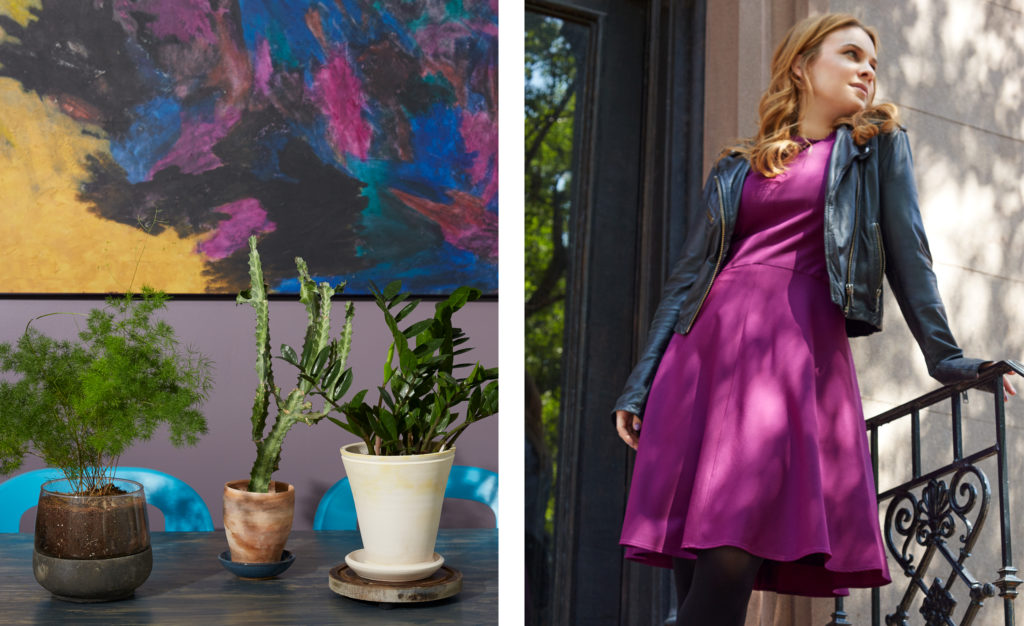
Carolyn wears the Toi dress in deep plum.
DIGGING THROUGH MY PAST definitely made me think about the different phases my wardrobe has gone through. In my early twenties, I remember feeling like I didn’t have a comfortable sense of “going out” outfits the way other girls did. That was something Ashley had—she could go to some lounge in slinky wedges or platform sneakers. She was comfortable with this nightlife persona, and that was something I definitely didn’t have and struggled with. Later on, I also remember the challenges of, “Now I’m starting to work in an office in my mid-twenties; what do I wear there?” I mostly wore heels and sweater sets. When I was working on the book, dressing for court was also a challenge—I felt like I needed to look professional but also conservative. Now I’m in my late thirties, and I’m less intimidated by figuring out what to wear in a new scenario. I have some reference points for almost any situation, and I have a sense of what makes me feel comfortable—and it’s still not clubwear.
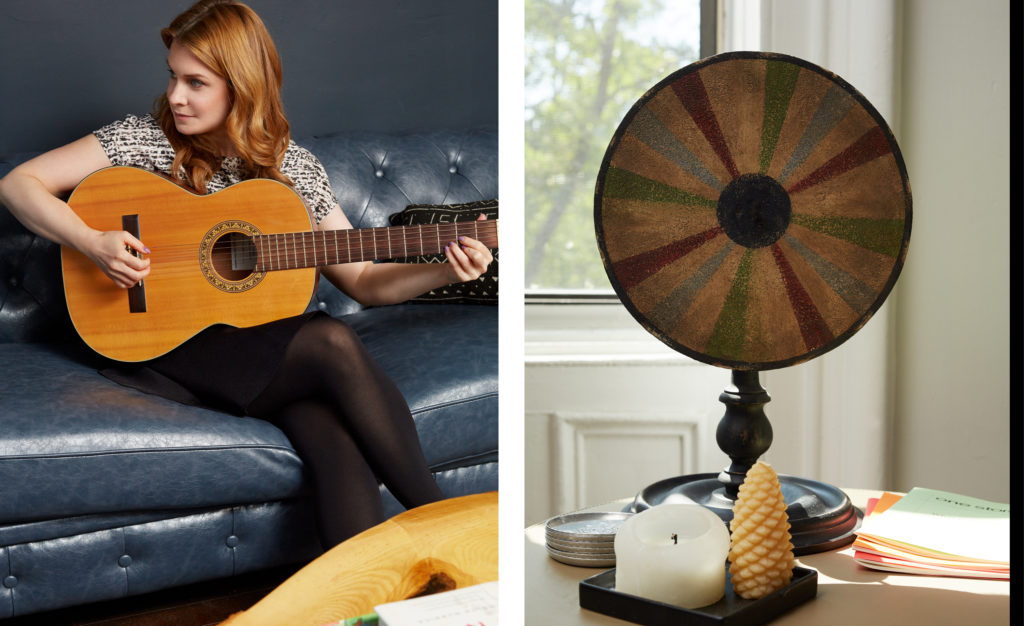
Carolyn wears the Didion 3.0 top in ink wash and the Madison 2.0 skirt in black.
I STARTED THIS BOOK when I was around 29, and it took me another nine years to finish it. Right now, as the book enters the world, I’m at a different life stage than when I started. That wasn’t something I anticipated; I thought I would finish much more quickly—like by the time I was 32. But even though the length of time was challenging, I grew up as a person and a writer in the years I was working on it. There were years of trial delays when I wasn’t very connected to the project. But the book had already been sold, and there were so many people involved, and I knew it was an important story worth pursuing. Sometimes authors get an advance and then flake, and that definitely was something I would not do.
WRITING A BOOK IS HARD. I tried to observe “writing hygiene,” and schedule time for writing every day; I also had to find a support system. For a lot of people, even when you do have a close relationship with an editor, you need other means of emotional support—friends, your agent, a writing group. It was super important to prioritize nurturing relationships with people who were invested in this project. Some of them were people at New York Magazine who read the book and gave me notes. Some writers are private about works in progress, but I would give my work to anyone who was interested because I didn’t want to feel alone in it. Over the years, I had many beta readers, and in the last two years my closest reader was my boyfriend Tom, who is a journalist himself. He ended up being the best editor I had. He was super insightful, and there was something interesting about how a man, as an outsider to female friendship, was able to see the story with a new perspective.
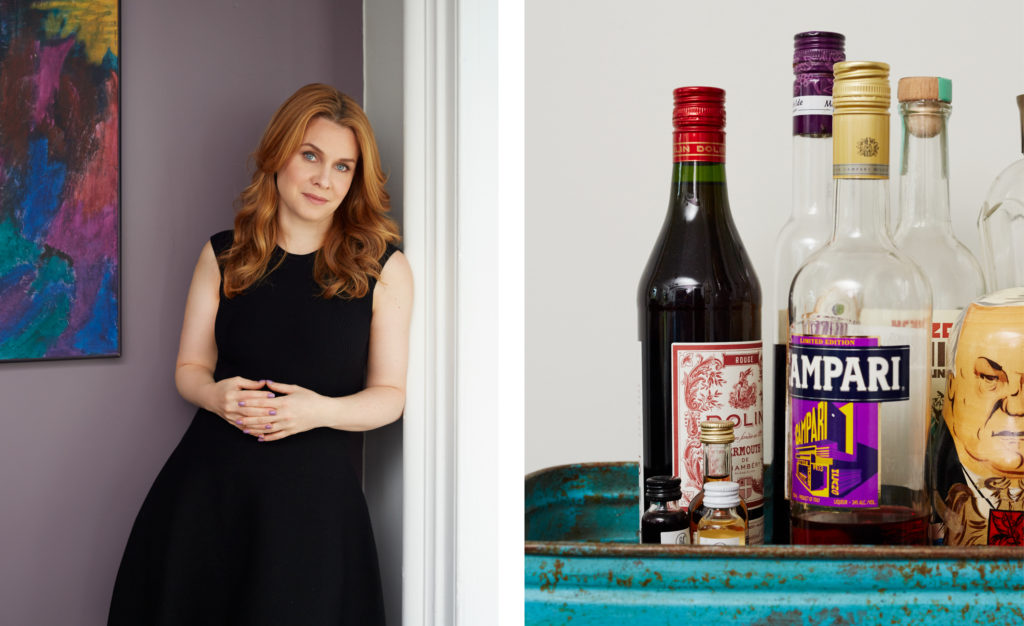
Carolyn wears the Melanie dress in black.
IN THE EARLY YEARS of working on the book, I mostly did it on weekends. I would go to cafes and make plans to meet someone else who was working on a long-term project. Then, during the last year, I gave myself a specific word count per day, which was actually not that much—450 words, but I had to break it up. That’s how I made it through my last stretch of writing. I did that mostly by staying at the office at New York Magazine and switching to working on the book after 6:00 p.m., sometimes just sitting at my desk until 10:00 p.m. after everyone had gone home.
THE BOOK STILL FEELS LIKE A FULL-TIME JOB—and I already have a full-time job. When is my down time? Even though I’ve finished writing, it’s almost just as much of a challenge to balance my time and emotional space between book promotion and being at the office. When I was working on my book, I never dreamed about being a full-time writer because that seemed too untethered to me. I wanted structure and relationships with the people I’ve met through New York. I was grateful to have that connection during the years of writing the book, and it was an important part of how I got the book done. But for the next chapter of things, who knows?
Photographs by Maria Karas.







